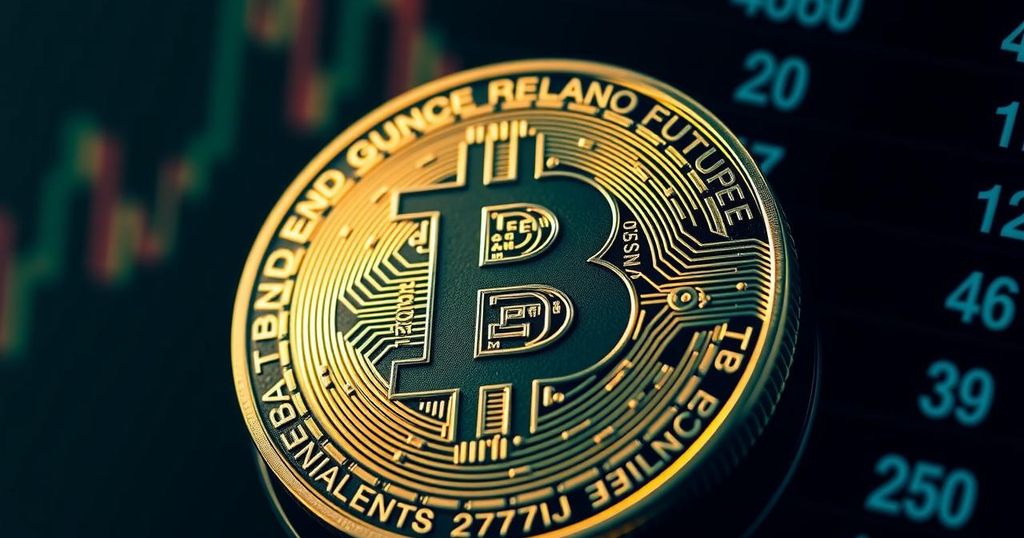Bitcoin Price Recovery Amidst U.S. Economic Concerns and Global Dynamics
Bitcoin has recovered 2.4% to $62,200.92 amid U.S. fiscal concerns, a strengthening dollar, and stimulus signals from Japan. Despite historical trends indicating negative correlation with the dollar, Bitcoin’s appeal seems reinforced by global liquidity factors and U.S. economic strength highlighted by robust employment data. Investor sentiment may continue to shape its trajectory as inflation risks rise and attention turns to alternative assets.
As of October 4, Bitcoin (BTC) had displayed a notable 2.4% increase, reaching a value of $62,200.92 after testing the critical support level of $59,900 just a day prior. This rebound occurred despite encountering initial challenges around the $62,000 mark. The momentum observed was largely attributed to various macroeconomic factors, including employment data from the United States, anticipated fiscal stimulus measures in Japan, and growing apprehensions regarding the stability of the U.S. financial system. Despite a robust U.S. economy, signs of deteriorating fiscal health are concerning many analysts. Notably, the U.S. dollar strengthened significantly, reaching a 50-day peak against other major currencies such as the euro, the British pound, and the Japanese yen. Historically, a negative correlation exists between the U.S. Dollar Index (DXY) and Bitcoin; however, the current market dynamics appear to challenge this trend. One possible explanation for this deviation is the “Milkshake Theory,” which suggests that the U.S. dollar is effectively siphoning global liquidity by offering attractive interest rates while demonstrating solid economic indicators, thus drawing capital away from other nations and inadvertently bolstering Bitcoin’s appeal. Further supporting this trend, October 4 saw the release of surprising payroll data revealing an addition of 254,000 jobs in September, surpassing economists’ projections and reinforcing the U.S. economy’s competitive position on a global scale. Concurrently, global growth concerns intensified, particularly following indications that Japan may introduce economic stimulus, which would signify a pivot from its longstanding strategies of managing deflation over the past thirty years. Additionally, the recent surge in oil prices, which increased by 9% fueled by rising tensions in the Middle East, has raised global inflation concerns. Such cost increases could prompt governments to inject further liquidity into their markets to stave off potential downturns, benefiting Bitcoin as investors anticipate an escalation in fiat money supply. Nonetheless, this anticipated rise could be countered by a ‘flight-to-quality’ scenario, wherein investors, apprehensive about a potential recession, prefer to hold cash or invest in companies perceived as resilient during economic downturns. Bitcoin is often viewed alongside major indexes like the S&P 500, which historically does not represent a traditional safe-haven asset. Nevertheless, the profitable landscapes and sound financial structures of leading technology firms such as Apple, Google, and Microsoft position them as comparatively safer investments relative to real estate and corporate debt, especially in light of expected rises in U.S. Treasury yields. Billionaire investor Stanley Druckenmiller has expressed deep concerns regarding the U.S. Federal Reserve’s predicament in cutting interest rates further, given the current economic robustness. He stated that 15% to 20% of his investment portfolio is focused on positioning against rising U.S. Treasury yields. This trend, coupled with increasing reliance on repurchase agreements by the Fed—financial tools that facilitate short-term liquidity while avoiding direct intervention—highlights growing investor anxieties about the U.S. financial market’s health. Consequently, the developments surrounding Bitcoin’s performance on October 4 are predominantly connected to the broader macroeconomic environment and the escalating worries surrounding U.S. fiscal health.
The price of Bitcoin, often influenced by macroeconomic conditions and investor sentiment, has been in focus given the dual outcomes of strong economic performance amidst dwindling fiscal health in the United States. With the U.S. dollar gaining strength against other currencies, the dynamics of Bitcoin’s correlation to traditional assets merit examination. The ongoing discussions surrounding U.S. federal policies, employment rates, and international economic strategies such as Japan’s potential stimulus initiatives form the essential backdrop against which Bitcoin’s price movements can be understood.
In summary, Bitcoin’s recent price recovery reflects a complex interplay of macroeconomic factors, including impressive U.S. employment growth, a strengthening dollar, and potential fiscal measures from Japan. While concerns about the U.S. financial infrastructure linger, the asset’s correlation with broader market dynamics suggests it may continue to attract interest as investors navigate a volatile economic landscape. This situation may position Bitcoin advantageously, even as investor strategies shift toward more traditional safer investments amidst recession fears.
Original Source: cointelegraph.com








Post Comment